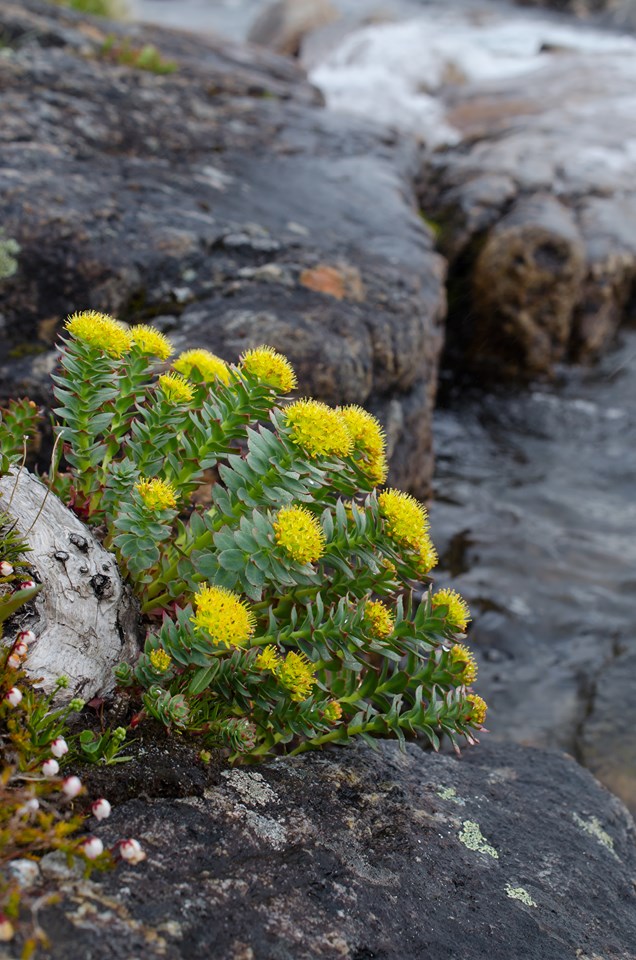An inconspicuous green plant with thick leaves grows in the purest places of the Carpathian Mountains. Rhodiola rosea is little known in Poland, yet its properties are well researched by scientists. It hides a powerful force.
For many decades, amazing legends have circulated about mountain rose (Rhodiola Rosea). No wonder. Research on this plant was conducted mainly in the Soviet Union. The story is shrouded in mystery, as it is closely related to the needs of the military. It began more than 3 thousand years ago in China and Siberia. It was there that people discovered that after eating a not very tasty plant they felt better. They had more strength, were more focused and could hunt or work longer. However, these were subjective feelings. The legends about the plant were passed down from generation to generation. In some stories, the herb had magical properties, in others only medicinal. One such story came around 1928 to a young Soviet doctor Nikolai Lazarev, who dealt with the effects of various chemicals on the human body.
The results of Nikolai's experiments and observations caught the attention of the military. So, during World War II, he was assigned to a team of researchers to create a tougher soldier. The Soviets realized that the Germans were using stimulants on soldiers. So they wanted to arm their troops with a "booster" that would be cheap to produce and available in areas not yet controlled by the enemy. They found something much better. It turned out that rosemary actually improved people's ability to keep going, and they were also more focused. But there were no side effects known from stimulants or drugs: a significant drop in strength and mood after a period of stimulation, or addiction. The plant was helping in some strange way. The mechanism of action was so unique and different from the effects produced by other herbs or drugs that it was decided to put it into a scientific framework and describe it in detail. That's when another Soviet scientist came on the scene: Israel Breckhman. When he collected all the research he knew, he found that everything fit into a pattern. To make a long story short, he found that Rhodiola rosea contains substances that strengthen resistance to internal imbalances. So it wasn't about elevating a person's capabilities for a short period of time, but about improving their ability to adapt to stress (both mental and physical). Plants with such properties, or more precisely, the substances found in them, were called adaptogens. Initially, the results of these discoveries did not penetrate beyond the Iron Curtain. Reading various accounts from those years, we can learn that the team led by Breckhman could count as many as 1.2 thousand researchers. He himself gained a high position in the structures of Soviet power. Today, we know that Lazarev's and Breckhman's findings can be verified by scientists all over the world who have taken adaptogens under their scrutiny. Substances that have adaptogenic effects have also been isolated. These are rosavins and salidrosides. The European Food Safety Authority (EFSA) confirms that mountain rhodiola helps the body adapt to emotional stress and physical exertion. Recent studies show that the plant's constituents help eliminate fatigue and headaches caused by stress. It can also alleviate difficulties with sleep, poor appetite, and decreased productivity. People who need more focus have also been tested and found that Rhodiola Rosea helps stimulate perception, and because it helps protect against stress and high blood pressure, it also has a beneficial effect on the cardiovascular system.
The above story would suggest that the rhododendron is hiding somewhere in the Siberian mountains. However, botanists discovered it also in the Carpathian Mountains. It can be found in Polish national parks. It is also grown by Polish scientists in research institutions. Rhodiola rosea is also valued in other Carpathian countries, where it grows wild. It owes its unusual properties to thousands of years of adapting to difficult mountain conditions. Exposed to wind and low temperatures, the plant accumulated ingredients inside that were supposed to protect it. On the surface, it looks inaccessible. The gray-green leaves are covered with a thick layer of wax. However, this is only appearances - inside it hides real treasures, and when it is warmed by the sun, it delights with beautiful flowers shimmering yellow and red.
Attachment area



